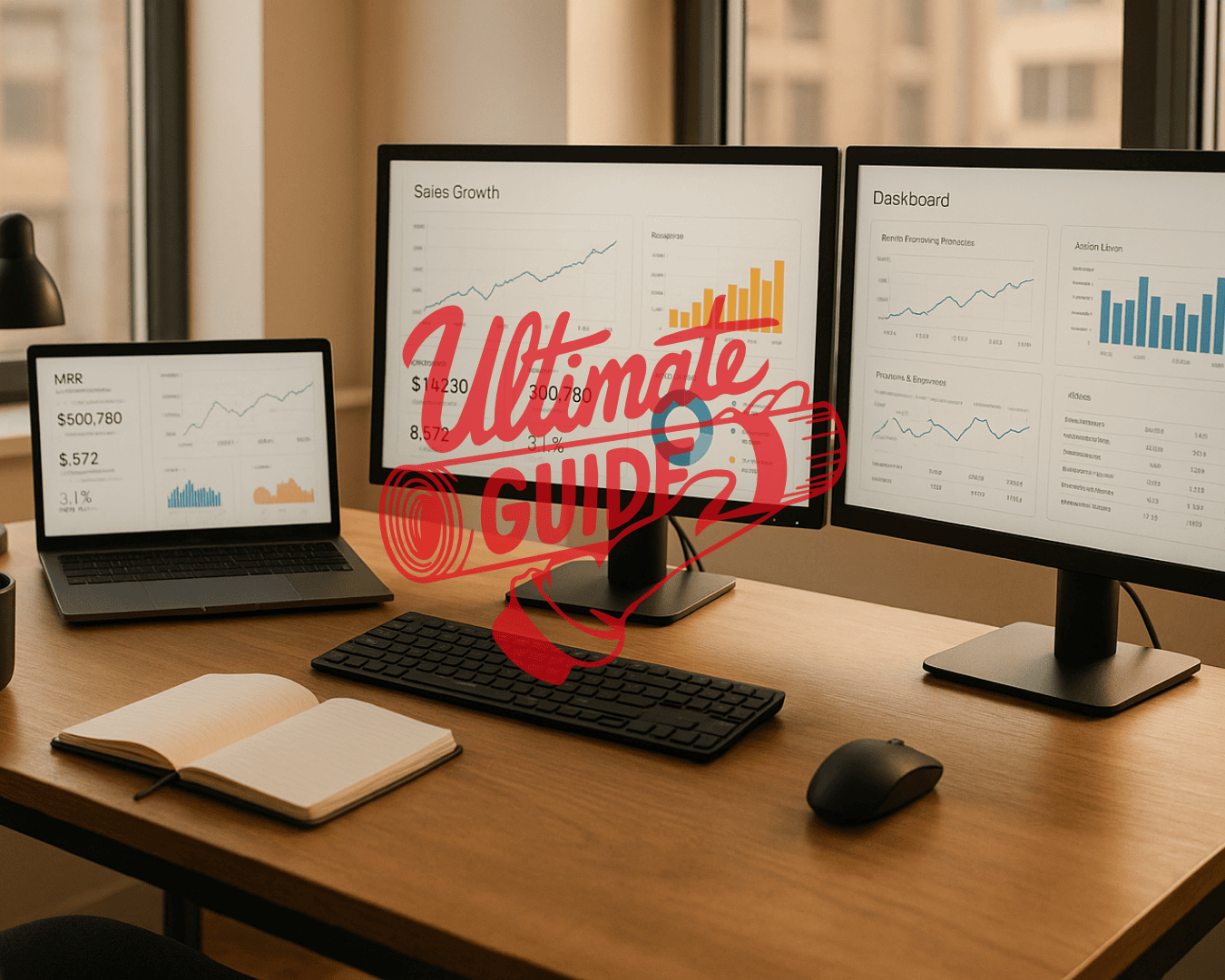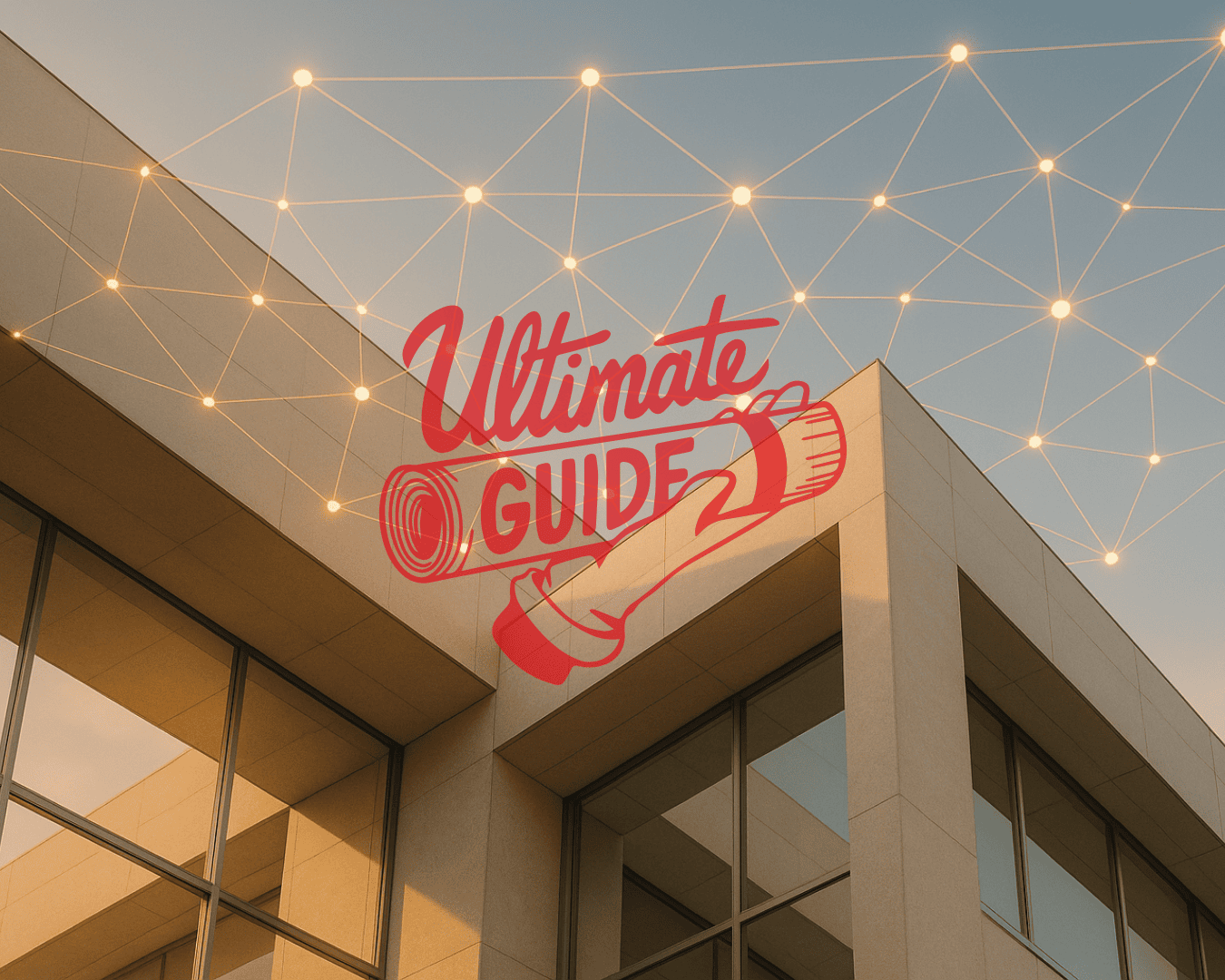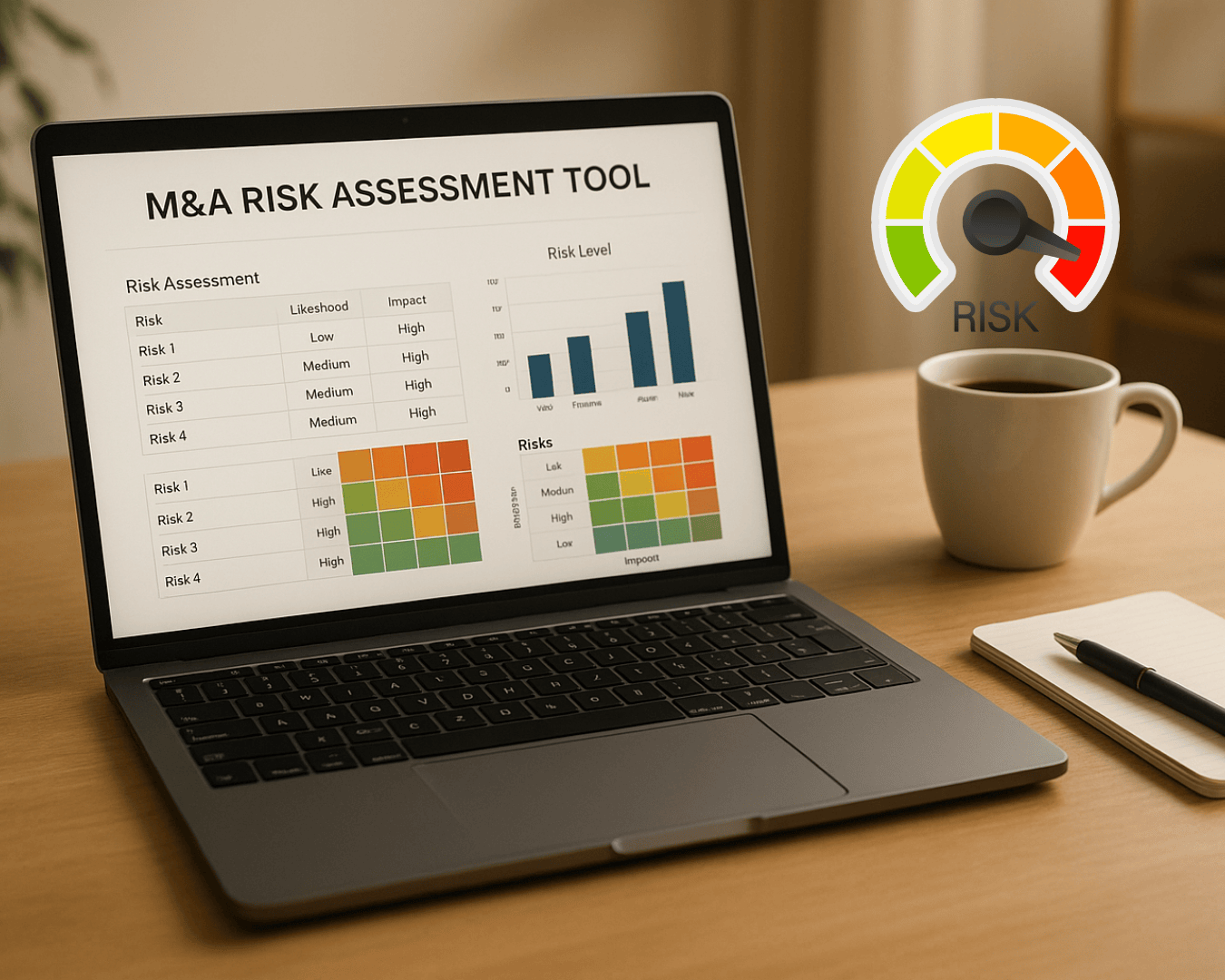Direct outreach is a proactive strategy for identifying and contacting business owners directly, bypassing brokers and public listings. This method is ideal for buyers seeking off-market opportunities, reduced competition, and direct negotiation. Here's how it works:
- What It Is: Direct outreach involves researching businesses, crafting personalized messages, and initiating contact with owners who may not be actively selling.
- When It Works Best: It's effective for niche industries, local markets, or when targeting owners nearing retirement or succession planning.
- Steps:
- Define criteria (industry, location, revenue, etc.).
- Build and enrich target lists using tools like LinkedIn Sales Navigator or Data Axle.
- Personalize outreach messages and use multi-channel strategies (email, phone, LinkedIn).
- Manage responses and schedule follow-ups effectively.
- Tools: Use CRMs (e.g., HubSpot), email verification tools (e.g., ZeroBounce), and outreach platforms (e.g., Apollo.io) to streamline efforts.
- Compliance: Follow U.S. regulations like the CAN-SPAM Act and respect time zones, holidays, and industry-specific busy periods.
Direct outreach demands preparation, persistence, and professionalism. Done right, it can uncover hidden opportunities and foster relationships with sellers who align with your acquisition goals.
How to Find Your Perfect OFF-Market ACQUISITION
Research and Targeting
This stage sets the foundation for a well-planned outreach process, ensuring every contact represents a meaningful opportunity. Success in direct outreach hinges on precise research and thoughtful targeting.
Define Your Buy Box
Your "buy box" is essentially a checklist of criteria that outlines which opportunities are worth pursuing.
Start by focusing on specific industries using NAICS codes, a standardized system widely used in the United States. Instead of spreading your efforts across all sectors, pick 3-5 industries where you have expertise or see growth potential. For instance, if you're interested in service businesses, you might look at NAICS codes like 541 (Professional Services), 621 (Ambulatory Health Care), or 722 (Food Services).
Geographic boundaries are another critical factor. Proximity can influence due diligence costs, ease of management, and relationship-building efforts. Decide on a range, whether that's within 50 miles of your base, specific metro areas, or entire states. Keep travel time and costs in mind - acquisitions often require multiple in-person visits.
Revenue is a key consideration, tied directly to your financial resources. For example, if you have $500,000 in available capital, you might target businesses with $1-3 million in annual revenue, assuming a valuation multiple of 3-5x. But don't stop at revenue - evaluate cash flow, growth trends, and capital needs to ensure the business aligns with your financial goals.
Owner demographics also play a role. Business owners aged 55-70 are often thinking about succession planning. Look for family-run businesses where the next generation isn’t interested in taking over or founder-led companies where the owner has been at the helm for 15+ years.
Finally, decide whether you're building a platform for future acquisitions or seeking standalone investments. Platform buyers need businesses with scalable systems, capable management teams, and room for expansion. Add-on buyers, on the other hand, focus on synergies - whether through geographic expansion or complementary services that enhance their current portfolio.
Once you've defined these criteria, use them to create detailed target lists tailored to your strategy.
Build and Enrich Target Lists
The quality of your target list can make or break your outreach efforts. Combining various data sources will help you build accurate and actionable lists.
- LinkedIn Sales Navigator: A powerful tool for identifying decision-makers. Use advanced filters to search by company size, industry, and location. Features like "Company Headcount Growth" can highlight expanding businesses, while "Posted on LinkedIn" filters reveal active, engaged owners.
- Data Axle: Formerly known as InfoUSA, this database offers insights like revenue estimates, employee counts, and ownership details for over 14 million U.S. businesses. It even includes hard-to-find data like years in business and ownership structure.
- Trade association directories: These provide highly targeted leads within specific industries. For example, the National Restaurant Association directory offers details on food service businesses, such as location, cuisine type, and ownership specifics.
- Secretary of State databases: Each state maintains business registration information, including filing dates and ownership structures. While this data often requires manual work, it’s one of the most reliable and up-to-date sources.
- ZoomInfo and Apollo: These platforms offer advanced search capabilities and contact enrichment. They use AI to verify contact information, improving email deliverability. They also provide technographic data, showing which software or systems a business uses - valuable for tailoring your outreach.
Beyond basic contact details, look for trigger events that signal a business might be open to acquisition. These include leadership changes, facility expansions, regulatory hurdles, or major contract wins or losses. Such insights help you time your outreach and craft messages that resonate.
Before launching campaigns, verify contact information through tools like NeverBounce or ZeroBounce. Invalid email addresses can harm your sender reputation and reduce overall deliverability. Once your lists are clean and enriched, score and prioritize your prospects to focus on the best opportunities.
Prioritize Your Targets
Not every prospect deserves equal attention. Prioritizing your targets ensures you allocate time and resources where they’ll have the most impact.
Develop a scoring system that assigns points based on key criteria. For example:
- Industry fit: 0-10 points
- Revenue alignment: 0-10 points
- Geographic proximity: 0-5 points
- Owner demographics: 0-5 points
Businesses scoring over 25 points should receive immediate attention, while those in the 15-24 range can enter a follow-up sequence.
Pay special attention to succession signals. These might include key employee departures, family members not involved in the business, or public discussions about retirement. Companies showing multiple signs of succession readiness should be prioritized.
Focus first on targets within a two-hour drive, as face-to-face meetings dramatically improve success rates. Once you’ve worked through these, expand to secondary markets within a four-hour drive or short flight.
Look for business value indicators like recurring revenue models, strong market positions, experienced management teams, or proprietary assets. Companies with growing revenue, improving margins, or recent investments may come with higher price tags but could offer better long-term returns.
Analyze the competitive landscape to identify businesses that might be more inclined to sell. Companies facing increased competition, regulatory challenges, or market disruption are often more open to strategic discussions. Staying informed through industry news and trade publications can help you spot these opportunities.
Consider breaking your target list into tiers:
- Tier 1: High-priority targets get personalized, multi-channel outreach, including phone calls and LinkedIn connections.
- Tier 2: Mid-priority targets receive personalized emails with follow-up sequences.
- Tier 3: Lower-priority targets enter automated nurture campaigns until they show signs of engagement.
Monitor your prioritization efforts by tracking response rates and conversions across different scoring ranges. Use this data to refine your scoring criteria and improve your targeting over time.
Create Messages and Outreach Sequences
When reaching out to potential business owners, crafting messages that strike the right balance between professionalism and genuine interest is key. Your approach should establish trust and credibility while respecting the recipient's time.
Build Your Narrative
Start strong by highlighting your background and available resources. For example, if you're a former operations manager with $2 million in capital, mention this upfront. Clearly outline who you are, why you're reaching out, and what makes you a good fit for their business.
Your investment focus should be clear and specific. Instead of vague statements like "looking for good businesses", explain your interest in their particular industry or business model. For instance, if you're targeting HVAC companies due to opportunities for consolidation in fragmented markets, share that insight. This shows you're strategic and have done your homework.
Be upfront about why now is the right time. Frame your interest around topics like succession planning or market timing. Many owners in the 55-70 age range are thinking about their legacy and want to ensure their business thrives under new leadership.
Focus on continuity rather than change. Owners often care deeply about the culture, employees, and relationships they've built over decades. Reassure them that your goal is to preserve what they've created, not to disrupt it.
If you share a local connection, mention it early. Owners often prefer buyers who understand regional dynamics and can maintain ties to the community.
Finally, address timing flexibility. Some owners may not be ready to sell immediately but are open to future discussions. Position yourself as someone willing to work on their timeline, whether that's six months or two years. Once your narrative is solid, tailor each message to reflect the unique story of the business owner.
Personalize Your Messages
Personalization shows you're genuinely interested and have taken the time to learn about their business. Reference specific achievements like anniversaries or industry awards, and use industry-specific terminology to demonstrate your understanding. For example, mention lean production for manufacturing companies or client retention for service businesses.
Timing can make personalization even more effective. If a business owner was recently featured in a local publication, reference the article and highlight a specific comment they made. This shows you're paying attention and value their expertise.
Address succession-related concerns when appropriate. For example, if their children aren't involved in the business, mention your experience helping families navigate these transitions while preserving their legacy.
However, avoid overdoing it. Stick to professional achievements - referencing personal social media posts or family details can feel intrusive and unprofessional.
Design Multi-Channel Sequences
A well-structured outreach sequence uses multiple communication channels over 10-15 business days. This gives potential sellers several opportunities to engage while respecting their preferred communication styles.
- First touchpoint: Start with a personalized email, sent midweek (Tuesday-Thursday) between 8:00 AM and 10:00 AM in their local time zone. Keep it short - 150 words or less - focusing on your credibility and interest in their business.
- Follow-ups: Combine emails, LinkedIn messages, and phone calls spaced 3-4 business days apart. This ensures varied and timely touchpoints.
If the owner is active on LinkedIn, send a connection request with a personalized note referencing your email. Once connected, share relevant industry insights to stay on their radar without being overly promotional.
Phone calls are particularly effective for older business owners who prefer direct conversation. Call during mid-morning or mid-afternoon hours, avoiding Mondays and Fridays. If you reach voicemail, leave a concise, clear message referencing your previous email and include your phone number twice - once at the beginning and once at the end.
For final touchpoints, acknowledge the lack of response but leave the door open for future conversations. Many owners may not be ready to engage immediately but could reach out months later when their circumstances change.
Track response rates by channel to refine your approach. Some industries may respond better to phone calls, while others prefer email. Use this data to adjust your strategy for different target groups.
Follow Compliance and Deliverability Rules
Ensuring your outreach complies with legal requirements and maintains high deliverability is critical for success.
- Email compliance: Follow the CAN-SPAM Act by including your physical address, a clear unsubscribe option, and honoring opt-out requests within 10 business days. Avoid misleading subject lines that could trigger spam filters.
- Domain setup and warming: Use SPF, DKIM, and DMARC to verify your domain. Start with a low email volume (50-100 per day) and gradually increase it over 4-6 weeks to build a strong sender reputation.
- List hygiene: Remove hard bounces immediately and monitor soft bounce rates. High bounce rates (above 5%) indicate data quality issues that need attention.
- Content optimization: Avoid spam triggers like excessive capitalization, multiple exclamation points, or words like "guaranteed." Keep a balanced text-to-image ratio and include a plain text version of your email.
For phone compliance, adhere to the Telephone Consumer Protection Act (TCPA). Avoid auto-dialers for cold outreach and respect do-not-call requests promptly. While business-to-business calls generally have more flexibility, maintaining detailed records of your activities is a best practice.
Set Up Tools and Systems for Outreach
Having the right tools in place can turn manual outreach into an efficient, scalable process. Modern software can automate repetitive tasks like data collection and performance tracking, giving you more time to focus on building meaningful connections. To get started, equip yourself with tools that streamline data management and improve accuracy.
Data Enrichment and List Management Tools
If you're targeting business buyers, LinkedIn Sales Navigator is a great starting point. It offers advanced search options, including Boolean filters, to help you pinpoint decision-makers based on criteria like company size, industry, and location.
For identifying businesses with high buying intent, ZoomInfo is a powerful resource. It provides intent data, signaling when a company shows increased interest in purchasing, and includes a detailed contact database with email addresses, phone numbers, and company profiles.
To maintain high email deliverability, tools like ZeroBounce and NeverBounce are essential. They verify email addresses, keeping your contact lists updated and reducing bounce rates.
Apollo.io stands out for its integrated sequencing capabilities. It combines a massive contact database with tools for automating follow-ups, all while ensuring data accuracy to keep your outreach efforts smooth.
For advanced data enrichment, consider Clay, which uses AI to connect multiple data sources and personalize outreach at scale, boosting your chances of making meaningful connections.
Outreach Automation and CRM Systems
Managing outreach campaigns is much easier with a reliable CRM. HubSpot CRM offers features like email tracking, deal pipelines, and automated follow-up templates, allowing you to maintain personalization while streamlining your workflow.
For sales-focused pipeline management, Pipedrive is a strong choice. It helps track conversations from the first email to deal closing, with tools like activity reminders, email syncing, and custom fields to keep key details organized.
Platforms like Outreach.io and SalesLoft take automation a step further. They offer features such as A/B testing, call recording, and multi-channel sequence management to handle complex outreach campaigns across email, phone, and social media.
Scheduling tools like Calendly simplify the process of setting up meetings by syncing with your CRM and sending automatic reminders. Similarly, Mixmax integrates real-time tracking, templates, and scheduling to keep your outreach organized and efficient.
Once your automation systems are set up, the next step is to track performance and refine your strategy for even better results.
Track Performance and Make Improvements
To make your outreach truly effective, you need to measure and analyze the right metrics. This helps you turn your process into a data-driven system that improves over time.
Start by monitoring open rates to ensure your emails meet industry standards. Low open rates can signal issues with deliverability or weak subject lines.
Reply rates are another key metric, as they indicate engagement. By analyzing both positive and negative responses, you can adjust your messaging and targeting for better results.
Track how many positive replies lead to scheduled conversations. This reveals how efficient your follow-up process is and where improvements might be needed.
Keeping an eye on email deliverability, including bounce rates and spam complaints, is crucial for maintaining a strong sender reputation. Tools that provide deliverability analytics can help you spot and fix problems early.
You should also analyze response times. While mid-morning emails on weekdays often perform well, testing different send times can help you find the best schedule for your audience.
Experimenting with message variations through cohort analysis can fine-tune your approach. Test different subject lines, email lengths, call-to-action placements, and personalization techniques to see what resonates most with your audience.
Finally, tracking pipeline velocity - the time it takes to move from initial outreach to a meaningful conversation - can provide insights into how efficient your overall process is. For acquisition-focused outreach, integrating tools like Clearly Acquired can help transition from initial contact to deal management, ensuring a smoother process as conversations progress into formal agreements.
sbb-itb-a3ef7c1
Handle First Conversations with Business Owners
After successfully sparking interest with your outreach efforts, the next big step is turning that interest into an opportunity. The first conversation with a business owner plays a crucial role in determining whether things progress or fizzle out. These initial calls require thoughtful preparation and a clear approach to build trust while gathering key details about the business.
Book Calls and Increase Show Rates
To avoid no-shows, simplify the scheduling process and confirm appointments effectively.
When proposing times for a call, offer three specific options in the prospect’s local time zone. For example: "Tuesday at 10:00 AM EST, Wednesday at 2:00 PM EST, or Thursday at 11:00 AM EST." This reduces the back-and-forth and makes it easier for them to pick a time.
If you’re using a scheduling tool, include a personalized note in your email. Something like: "I’ve set aside 30 minutes to discuss your business and potential opportunities. Here’s my calendar link, or feel free to reply with a time that works better for you."
Send a confirmation email about 24 hours before the call. Make sure to include the meeting details, your contact information, and a brief agenda. For instance: "Looking forward to our call tomorrow at 2:00 PM EST. I’ll call you at (555) 123-4567. We’ll spend about 30 minutes discussing your business, your goals, and ways we might collaborate."
Finally, send a quick reminder 15 minutes before the scheduled time. A short message like, "Hi [Name], just confirming our call in 15 minutes. I’ll reach out at 2:00 PM. Looking forward to speaking with you", ensures everything stays on track.
Structure the First Call
This first conversation sets the foundation for your relationship, so it’s important to strike the right balance between professionalism and genuine curiosity.
Start with a warm introduction that references your earlier communication and clearly state the purpose of the call. You might say: "It’s great to connect! I’d like to spend the first part of our conversation learning more about your business and goals. Then, I can share a bit about how I work with business owners to see if there’s a good fit. Does that sound good?"
Reassure them about confidentiality to make them comfortable sharing details. Then, use open-ended questions to guide the conversation. Ask about the business’s history, current challenges, and future goals. These questions not only help you gather valuable insights but also make the business owner feel heard.
Pay close attention to hints of interest, such as: "I’ve been thinking about my exit strategy", or "The business is becoming too much for me to manage." These comments can signal a potential readiness for a transaction.
Focus on understanding their business and their goals rather than diving into deal specifics right away. Ask about their team, customer base, key challenges, and long-term vision. This gives you a clearer picture of the opportunity and their motivations.
Wrap up the call with clear next steps. For example: "Based on what you’ve shared, it sounds like there’s a lot we could explore further. Would you be open to a follow-up conversation where we can dive deeper into the specifics? I can also share more about my background and how I typically structure these types of partnerships."
Follow Up After the Call
A timely follow-up email, sent within 24 hours, is essential to keep things moving forward. This email should show you were paying attention, highlight key points from the conversation, and outline the next steps.
Start by thanking them for the conversation and summarizing the main points. For example: "Thank you for taking the time to chat. I really enjoyed learning about your expansion into the Northeast and the challenges you’re facing with inventory management."
If the discussion warrants further talks, include a mutual Non-Disclosure Agreement (NDA) to ensure both sides can share details securely.
Propose specific next steps with clear timelines. For instance: "I’d love to schedule a follow-up call next week to discuss your goals in more detail and share more about my approach. I’m available Tuesday at 10:00 AM EST or Wednesday at 2:00 PM EST. Would either of those work for you?"
If you have any additional resources, include them to add value. For example, you might attach a brief overview of how you typically work with business owners.
For high-potential prospects, you could also mention tools like Clearly Acquired to show you have systems in place to handle transactions efficiently. This adds a layer of professionalism to your approach.
Keep your email concise - three to four short paragraphs should be enough. End with a clear call to action, such as: "Please let me know which time works for you, and feel free to reach out if you have any questions before our next conversation." This ensures you stay top of mind and keeps the process moving forward.
U.S.-Specific Considerations for Direct Outreach
Having a solid outreach process is just the beginning. To truly connect with business owners in the United States, you need to account for the country's unique logistical, cultural, and regulatory factors. Managing time zones effectively and respecting local norms can significantly improve your chances of success.
Time Zones and Scheduling
The United States spans four main time zones - Eastern (ET), Central (CT), Mountain (MT), and Pacific (PT) - creating a three-hour difference between the coasts. To make your outreach more effective, align your communication with these regional time differences.
For emails, aim to send your first touch mid-morning (9:30–11:00 a.m. local time) or early afternoon. Avoid late Fridays, as decision-makers are often less responsive. When proposing calls, always offer two specific time options in the recipient's local time zone, such as: "I’m available Tuesday at 11:30 a.m. CT or Thursday at 2:00 p.m. CT. Which works best for you?" This minimizes back-and-forth and simplifies scheduling.
Using tools that automatically detect and display the recipient's time zone can further streamline scheduling. After confirming a meeting, explicitly state the agreed time and date, like: "Looking forward to our call on Wednesday, August 20th at 2:30 p.m. CT." This reduces the chances of confusion or missed appointments.
Stick to standard business hours - between 9:00 a.m. and 5:00 p.m. - and avoid "edge hours" early in the morning or late in the evening. Also, steer clear of Monday mornings (8:00–10:00 a.m.), when inboxes are typically flooded from the weekend.
Language and Tone
Once your schedule is set, focus on refining your communication style to fit U.S. business norms. American business owners value direct, respectful, and efficient communication. Your outreach should be concise and demonstrate genuine interest in their business.
Keep emails short - 120 to 150 words - and focus on relevance and clarity. Avoid jargon, overly formal language, or pushy sales tactics. Instead, highlight specific details that show you’ve done your homework. For example: "I noticed Acme HVAC serves multi-site clinics across DFW. I specialize in acquiring service businesses and wondered if a low-disruption sale in the next 12–24 months might be of interest."
For phone calls, introduce yourself and your purpose right away, keeping your opener under 20 seconds. A sample script could be: "Hi John, this is Alex with Clearly Acquired. I work with business owners exploring succession or growth options. Would a quick 15-minute call this week to discuss your goals make sense?" Asking for permission to continue fosters a respectful tone.
Since American business culture emphasizes efficiency, propose a single, clear next step - like a short call - to make it easy for the recipient to respond.
Timing and Seasonality
Timing your outreach around U.S. holidays and seasonal patterns can also make a big difference. Avoid contacting businesses during major federal holidays (e.g., New Year's, Independence Day, Labor Day, Thanksgiving, and the end-of-year). The last two weeks of December are particularly tough, as many owners are focused on year-end tasks and family commitments.
Pay attention to industry-specific busy seasons as well. For instance, CPA and bookkeeping firms are swamped from January to mid-April due to tax season, while retail and e-commerce businesses are hard to reach from November through December. Construction, landscaping, and hospitality businesses also have peak periods tied to their active seasons.
Instead, focus your outreach during "shoulder periods" when owners are more likely to be available. For example, early January (after the first week), late April through May, and September through October are often ideal times to connect. If you’re running ongoing nurture campaigns, pause outreach during busy seasons and resume just after they end.
Local patterns also matter. For example, businesses in tourist-heavy areas like Florida, Colorado ski towns, or coastal regions may have unique seasonal rhythms. Researching these nuances can help you time your outreach more effectively.
When referencing Clearly Acquired in your messaging, position it as a partner that understands these timing challenges: "I’m with Clearly Acquired, a tech-enabled Main Street investment bank supporting entrepreneurs with capital, advisory, and verified deal flow from sourcing to closing. We work around your schedule and business priorities." This shows you respect their time while presenting yourself as a professional resource.
Key Takeaways
Direct outreach requires a structured, persistent, and professional approach. When done right, it can open doors to opportunities that traditional deal flow methods might overlook. It connects you directly with business owners who may not have considered selling through conventional channels. Let’s revisit the key elements of the process and wrap up with actionable tips for success.
Review of the Outreach Process
The process starts with defining your buy box - a clear set of criteria to guide your target selection. Without this, outreach efforts risk becoming unfocused. Next, research and targeting help create detailed lists that go beyond just names and contact details, ensuring you’re reaching the right people.
Crafting messages and sequences is where research turns into action. Initial emails should be concise - 120 to 150 words - and engaging. Combining email, phone calls, and LinkedIn outreach into a multi-channel strategy increases your chances of making a connection, all while staying compliant with CAN-SPAM regulations.
Tools and systems are essential for scaling outreach efforts. Data enrichment platforms help you find accurate contact information, while CRM systems track your interactions and automate follow-ups. Performance tracking allows you to fine-tune your approach by analyzing which messages and channels yield the best results.
When transitioning from outreach to first conversations, focus on presenting a clear value proposition, being flexible with scheduling, and preparing thoroughly. Prompt follow-ups show professionalism and help maintain momentum.
Mastering these steps provides the foundation for consistent outreach success, setting the stage for actionable strategies that deliver results.
Final Tips for Success
- Test and refine constantly. Measure open rates, response rates, and conversions to identify what works best. Even small tweaks to subject lines or timing can lead to noticeable improvements.
- Keep a steady pace. Sending 50 emails every week is far more effective than sending 200 in one burst and then going quiet for weeks.
- Build trust over time. Not every business owner is ready to sell immediately, but consistent communication can lead to opportunities down the line - sometimes 12 to 18 months later.
- Be mindful of timing. Avoid reaching out during industry-specific busy seasons, major holidays, or year-end crunch periods. Instead, focus on quieter periods when owners are more likely to engage.
- Document everything. Keep track of contact attempts, conversation details, and owner preferences. This information is invaluable for personalized follow-ups and long-term relationship building.
- Stay professional and compliant. One poorly crafted message can harm your reputation, especially in industries where business owners often talk to one another.
Successful buyers know that direct outreach is about more than just finding deals - it’s about building relationships. Each interaction is an opportunity to plant seeds for future partnerships, not just transactions. This mindset shift from chasing deals to fostering connections is what separates sporadic success from consistent deal flow.
Lastly, remember that direct outreach is a complement to other sourcing methods, not a replacement. The businesses you connect with through targeted outreach often represent some of the best acquisition opportunities because they aren’t being actively marketed to multiple buyers at the same time.
FAQs
What’s the best way to research and find businesses for direct outreach?
To pinpoint the right businesses for direct outreach, it’s crucial to start with a clear game plan. Define specific criteria - think industry, company size, and location. Once you know what you're looking for, tap into reliable databases and tools to locate businesses that fit the bill. Dive deeper by exploring their websites, social media profiles, and public records to gather useful details that could help personalize your approach.
Keep your research organized. Group your findings into categories, like location or industry, to ensure your outreach is focused and strategic. This method not only streamlines your process but also helps you create a high-quality list of businesses, boosting your chances of building meaningful connections.
How can I make my outreach messages more personalized and effective?
How to Craft Outreach Messages That Get Noticed
When it comes to outreach, doing your homework is key. Start by digging into your prospects' business, their challenges, and the industry they operate in. By referencing specific details, you show that you’ve taken the time to understand their world, which helps establish trust right from the start. Personalization isn’t just about dropping their name into an email - it’s about speaking directly to their unique goals or pain points.
Take it a step further by using multiple communication channels. Whether it’s email, social media, or even a well-timed piece of direct mail, tailor each message to suit the medium and the recipient’s preferences. Keep the tone professional but approachable, and focus on offering something valuable - whether that’s a solution, insight, or opportunity that aligns with their needs. Thoughtful and personalized outreach isn’t just appreciated; it’s also far more likely to spark engagement and get a response.
How can I ensure compliance with U.S. laws when conducting direct outreach?
To ensure compliance with U.S. regulations during direct outreach, you need to follow the CAN-SPAM Act. This means clearly identifying your messages as commercial, offering an easy way for recipients to opt out, and including accurate sender information. On top of that, privacy laws like the CCPA require you to obtain consent when appropriate and respond quickly to opt-out requests.
Sticking to these rules not only helps you avoid legal trouble but also strengthens trust with your audience and promotes ethical outreach practices.























.png)
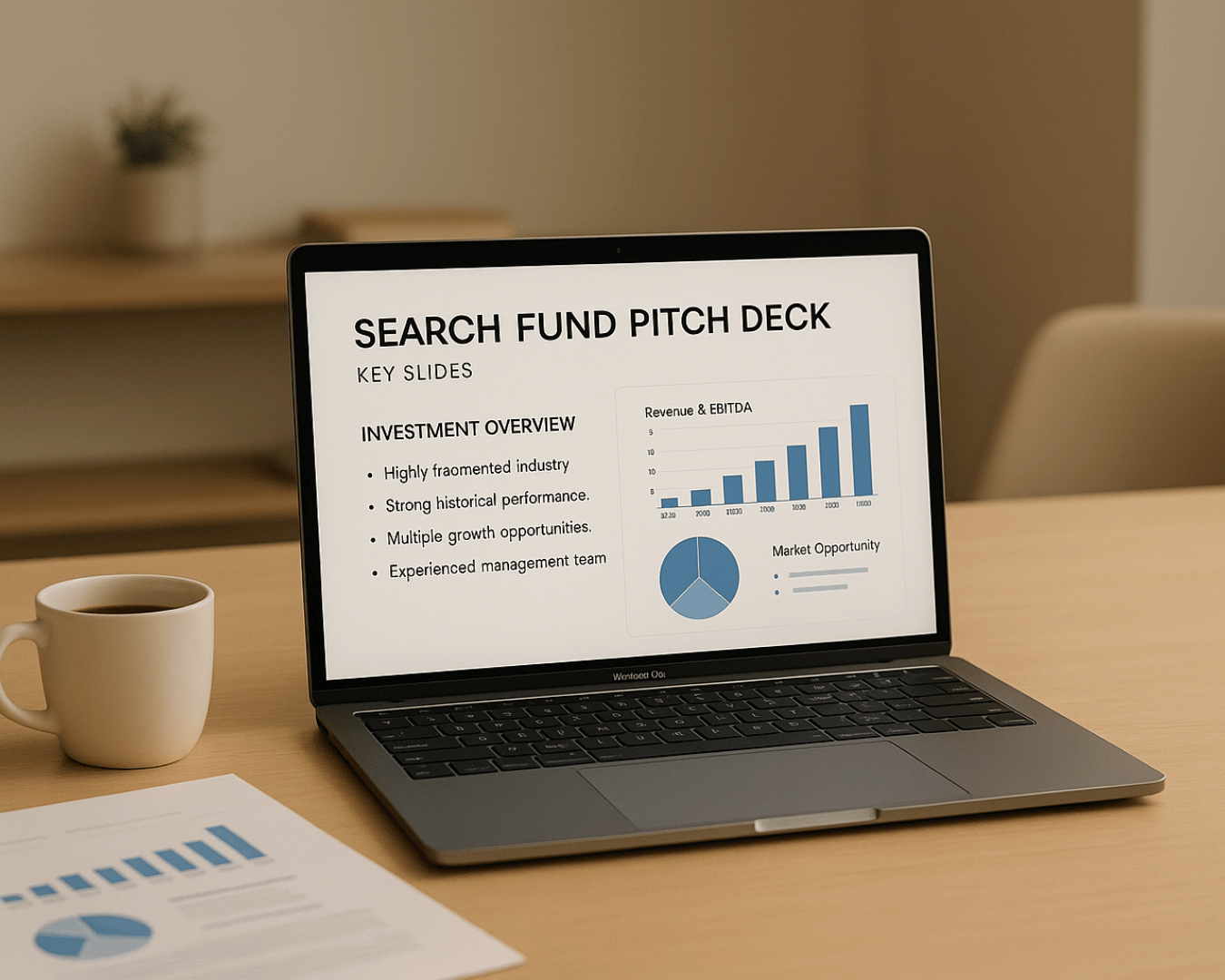




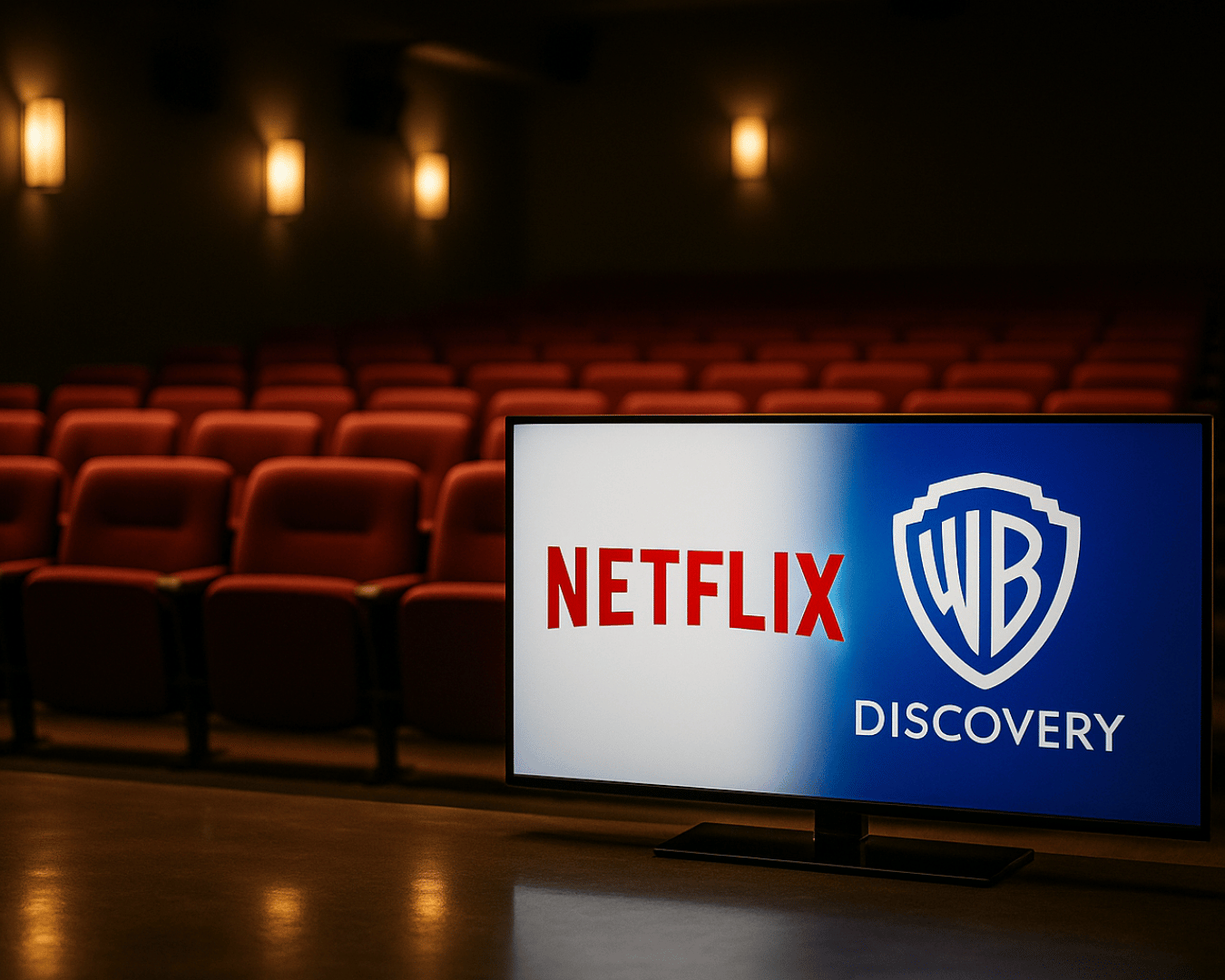























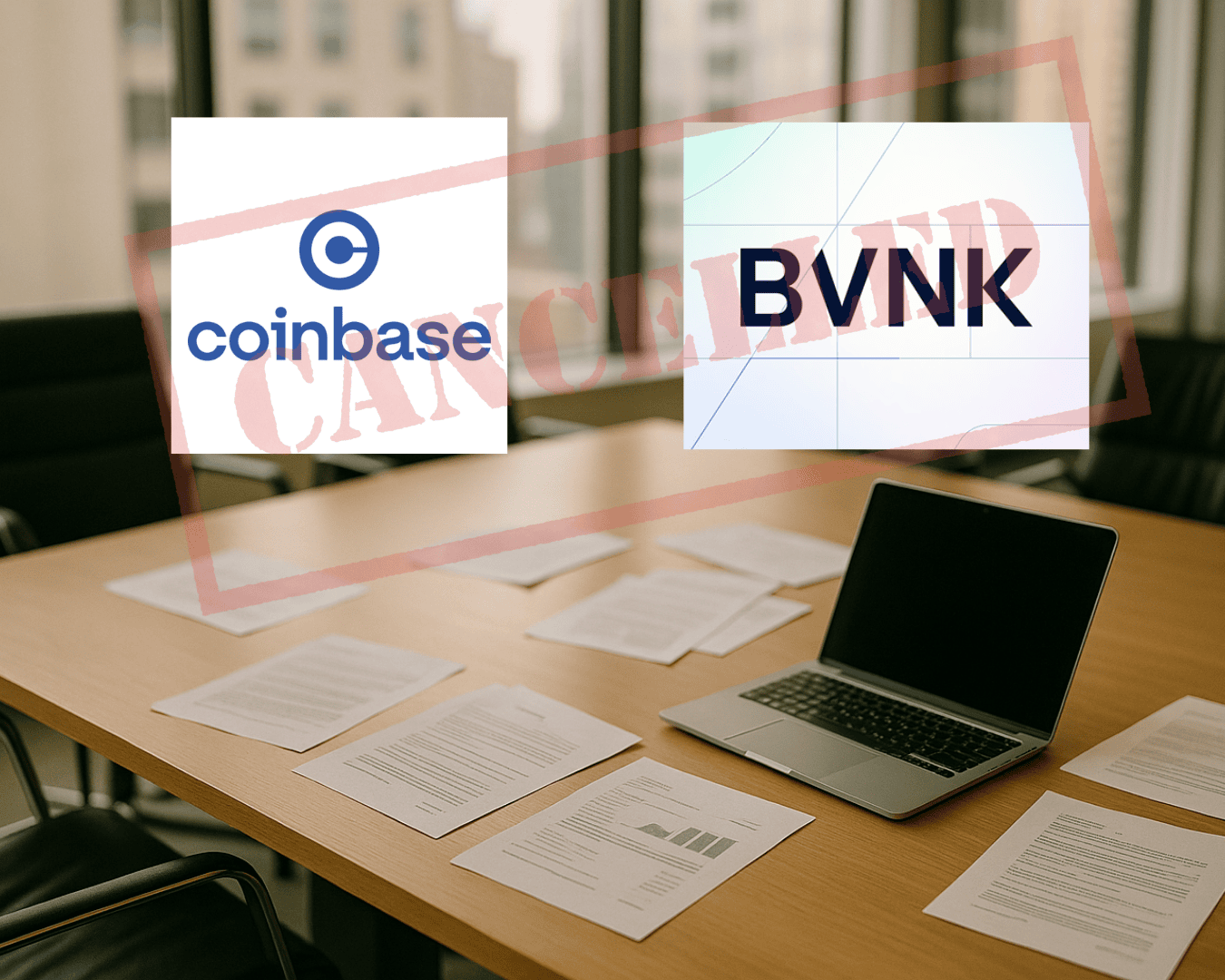









.png)

















